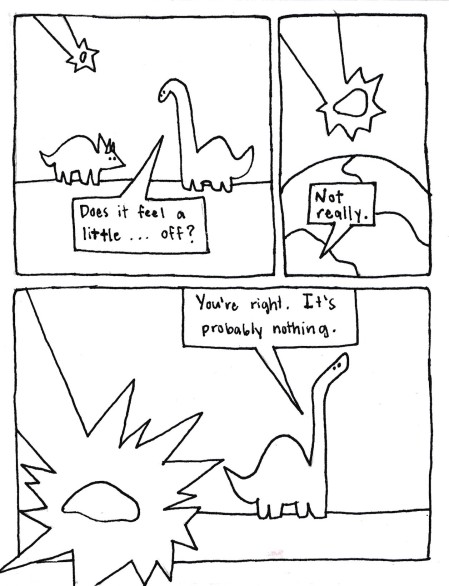Over the course of this semester, I have become acquainted with writing not only as as a rhetorical process, but also as a visual and creative platform. English 101 has challenged me to think beyond my comfort zone through a series of unconventional reading and writing assignments, each of which were uploaded to a public website that I maintained throughout the semester. Writing in the online space broadened my potential audience tenfold–a prospect which allowed me to write about a niche topic for a broad array of perspectives.
Each assignment in this course utilized visual approaches, often in the form of an image accompanying a blog post. This method posed a unique opportunity for collaboration in the online space, with students often utilizing content from secondary websites to achieve a desired aesthetic. Employing technology appropriately and engaging responsibly in online spaces–which happens to be a learning outcome of English 101–became commonplace with weekly “Sunday Sketches,” in which students employed different technological and creative approaches to complete exercises in visual thinking. My favorite of these required students to create a “triptych” comic, in which a minimalist three panels told a comedic story. For my triptych, I decided to shed some light (or rather, a meteor) on the End-Permian Extinction.

The triptych, like many other assignments, served as a cornerstone of English 101’s structure and allowed students introductory experience with an aspect of the comics medium–in this case, construction–before the continuation of a three-portion literacy narrative. The first stage of the literacy narrative consisted of an alphabetical text detailing an early experience with language. For me, this piece centered around my initial experiences with reading and creative writing. While the end product was satisfactory, major structural issues presented themselves as a result of long-term memory recollection–my alphabetical narrative became sparse and somewhat unclear when writing about less prominent memories, which made the overall piece imbalanced and choppy.
The second stage of this project, which was preceded by the triptych assignment, required students to adapt their alphabetical literacy narrative into a short comic book. While previous readings (among them, personal narratives by Art Spiegelman and David Small) within the comics medium had acquainted me with the desired layout of this assignment, the actual process required the reimagining of my alphabetical text. Structure was crucial to the execution of this assignment and, seeing as my previous narrative was lacking in foundational areas, I was forced to revamp my original work dramatically. In the process of creating the comic, however, I found that the visualization of memory associated with graphic narratives made communicating my thoughts more manageable.
In my analytical essay, The Utilization of Comics to Establish Fluidity in Emotional Development, I argue that, “in graphic novels with a single author-illustrator especially, the line between past and present is blurred in an effort to showcase how specific events shape one’s perception of reality. Graphic narratives present a unique way for authors to do this, as the format has built in narrative breaks called “gutters” that mirror memory lapses in recounting trauma.” This idea stems from the work of Hillary Chute, a leading academic on the comics medium whose work provided a central lens for the readings in English 101. Her essay, Graphic Women, provided key insight with respect to personal trauma for students to summarize, analyze, synthesize, and evaluate. Though I wouldn’t consider my experiences with literacy to be “traumatic,” the comics medium allowed me to reformat the breaks in my memory in a way that created a more clear and concise narrative through visual thinking strategies

After completing my narrative comic, I revisited my alphabetical text for the third and final installment. For this draft, I analyzed my first and second narratives and revised them into a new alphabetical text with a fresh perspective. Through this multistep assignment, I was able to approach writing in systematic, yet abstract process that expanded my writing beyond both its original genre, quality, and scope–thus satisfying two learning objectives for this course. Every assignment also consisted of a reflection portion, in which students were able to record any growth they observed or thoughts they had with respect to their published work–an aspect which allowed me to track my progress in using an online space.
Utilizing the comics medium in conjunction with online forums in an academic setting has assisted and strengthened my creative process by providing an abstract platform with which to explore literacy. The development of visual thinking has also proven useful in my writing, as I have a knack to avoid brainstorming and cut right to the chase (more specifically, the rhetorical essay or short story). By creating a website, I’ve had to take multiple structural details into account–among them: aesthetic, sequence of blogs, and the overall tone of my website. Maintaining this online outlet for both analytical and creative assignments has come with a learning curve, and my growth is evident when reviewing both the aesthetic and confidence of my work throughout the semester.
As the term draws to a close, I can state, with confidence, that I am proficient at and comfortable with writing for the web, which is something I plan to continue beyond the scope of English 101. As a potential Creative Writing major, I frequently clack away at my computer keys to produce a poem or brainstorm a short story. The online space creates a plethora of opportunities to share my writing–whether it ultimately takes the form of a blog or a dumping ground for my poetry.
